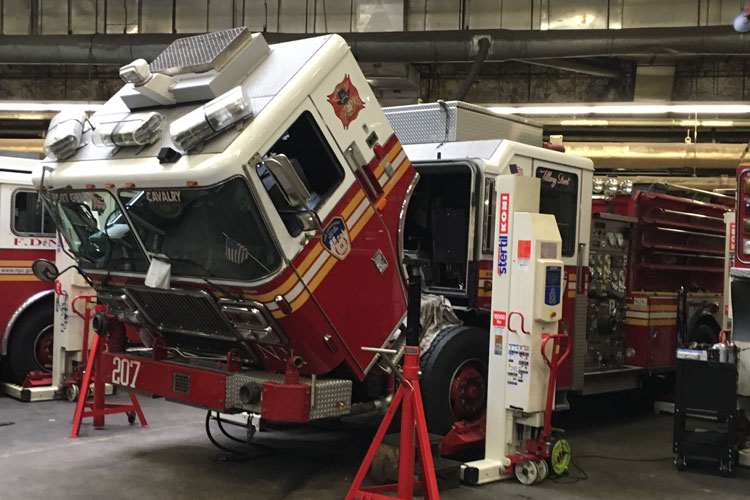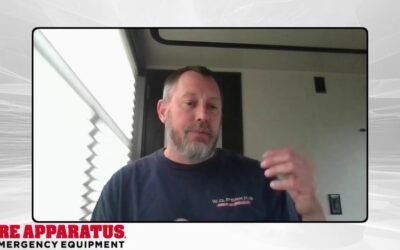APPARATUS: THE SHOPS

Handling fire apparatus warranty repairs and maximizing manufacturer support require a proactive and organized approach to ensure the apparatus remains in optimal condition and any issues are promptly addressed.
Through trials and tribulations and a lot of frustration, here is some information I have learned along the way that could help you manage this process.
Know the Warranty Terms
Review the warranty documentation. Understand the warranty coverage, including the duration and what parts and services are covered. Ensure labor for the repair is included and understand any exclusions of the policy. This will allow you to identify what is eligible for repairs or replacement.
Ensure the correct registration. Ensure you register the fire apparatus with the manufacturer as soon as you purchase it or take delivery. You can often do this online. It ensures that you’re covered by the warranty from day one. Coordinate this with the dealer, as the dealer is the one profiting from not only the sale of the apparatus but the warranty repair reimbursement. A proficient sales representative will perform this task either with you or for you.
Keep all records, including proof of purchase, maintenance logs, and repair history. Manufacturers may require this for warranty claims.
Develop a Maintenance Schedule
Follow the manufacturer’s recommended maintenance schedule and procedures. This ensures that warranty coverage is not voided and helps prevent issues that could arise from neglect. In the case of engines or generators, make sure you use the specified lubricants so your warranty is not voided. The last thing you want is for the manufacturer to perform an oil analysis and determine that someone added the wrong fluid. This could potentially put you on the hook for high-dollar repairs.
Conduct regular inspections to catch minor problems early. Otherwise, they can escalate into major failures that could require expensive repairs.
Establish Clear Communication Channels
Identify a specific contact person or department at the manufacturer or dealer for warranty claims. This ensures faster and more direct communication.
When reaching out for support, be clear and detailed about the problem. Include information such as the model number, the serial number, the nature of the issue, and any diagnostics you’ve already performed. A picture is worth a thousand words in some cases.
Document All Issues and Repairs
Create an organized repair log of all warranty-related issues, including dates, nature of the problem, repairs, and parts replaced. This can be useful if disputes arise or if follow-up repairs are needed.
Take photos of any damage or defects for documentation. This helps in case the manufacturer requests visual proof before proceeding with repairs or replacements.
Use the Manufacturer’s Network
If possible, use authorized service centers for warranty work. Manufacturers are more likely to support claims made by recognized professionals familiar with their products. Warranties often include direct support from the manufacturer. This can be invaluable, as you’ll have access to technicians with deep knowledge of the specific apparatus and its systems.
Many manufacturers offer training programs for maintenance and troubleshooting. Consider using these resources to better understand the apparatus and reduce the likelihood of issues.
Follow UP on warranty Claims
Submit warranty claims as soon as you have identified a problem. Delayed claims might result in loss of warranty coverage.
If you don’t receive a timely response or a resolution, escalate the issue within the manufacturer’s support system. This may involve contacting a supervisor or a higher-level customer service team.
Keep a record of all communication with the manufacturer, including e-mails, phone calls, and official paperwork.
MAXIMIZE MANUFACTURER SUPPORT
Some manufacturers offer extended warranty or service contracts that provide additional coverage and support. Consider these options if available to extend the lifespan of your apparatus. Although the price of an extended policy may be a deterrent, the risk may be worth the reward in the end.
Many manufacturers have forums or user groups where you can exchange knowledge and experiences with other fire departments or apparatus owners. This can be a helpful resource for troubleshooting and tips on maximizing the performance of your equipment.
Some manufacturers offer specialized preventive maintenance programs that may be more cost-effective in the long run. This can help catch issues before they become warranty claims.
BE PROACTIVE
Regularly update software/ components. Some fire apparatus come with onboard technology or software that may require updates to improve performance or prevent malfunctions. Keep these updates current, as they may be covered under warranty
Manufacturers may issue recalls or service bulletins regarding certain components. Stay informed about any such notices and take action when required.
CONSIDER THE LIFE CYCLE OF THE APPARATUS
Be aware of when the warranty expires. As the apparatus ages, the manufacturer’s willingness to provide support may decrease, so it’s best to resolve any issues before the warranty expires. Prior to the end of the warranty, it has proven to be beneficial to perform an inspection of the apparatus. If you find any items, it is imperative to submit a claim prior to the end date of the warranty.
Set aside funds for repairs outside of warranty, and plan for the eventual replacement of parts or the entire apparatus as it ages.
A warranty on fire apparatus offers comprehensive benefits, including cost savings, improved reliability, and enhanced protection for essential equipment. If budgeting allows, opt for an extended warranty to ensure the apparatus remains in peak condition, that repairs are done quickly and affordably, and that you have peace of mind knowing that essential equipment is supported for a longer period. This is especially valuable in high-stakes environments where reliability and safety are critical.
related content
- Fire Apparatus Technology: The Impact on Repair and Maintenance
- Ensuring Safety and Function: The Crucial Role of Fire Apparatus Factory Inspections
- Maximizing the Efficiency of Your Fleet
MICHAEL HUBER is a fire apparatus driver/ operator and fire apparatus fleet manager for the Baltimore County (MD) Fire Department.






